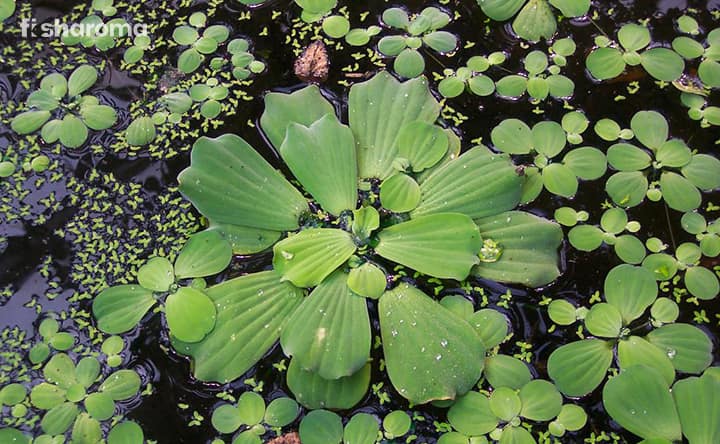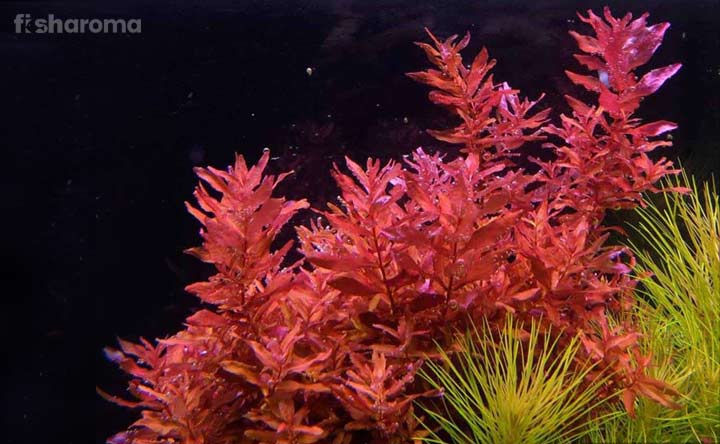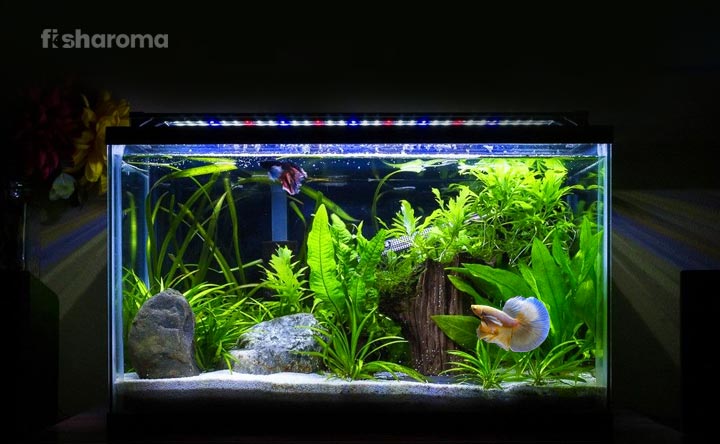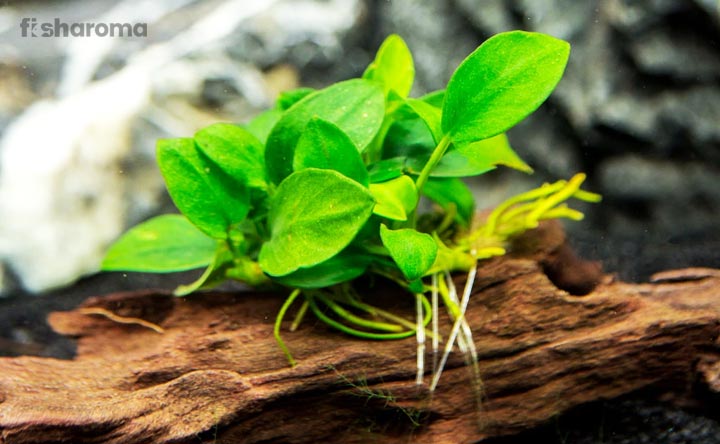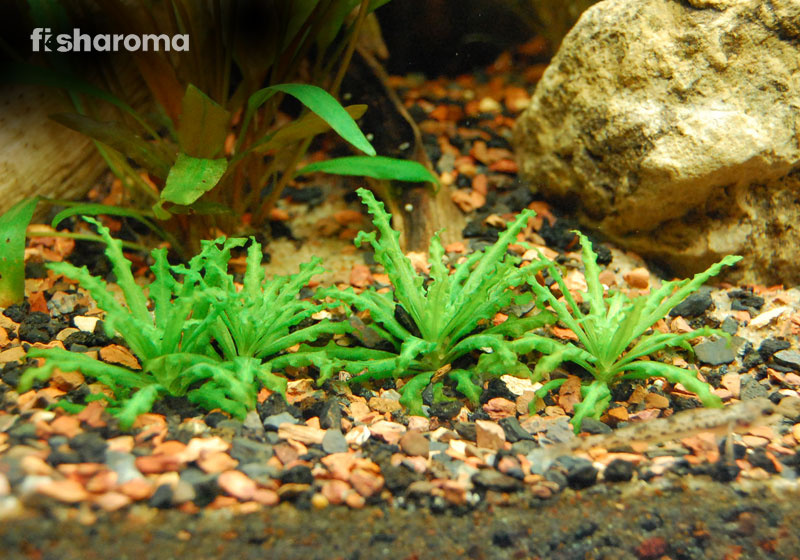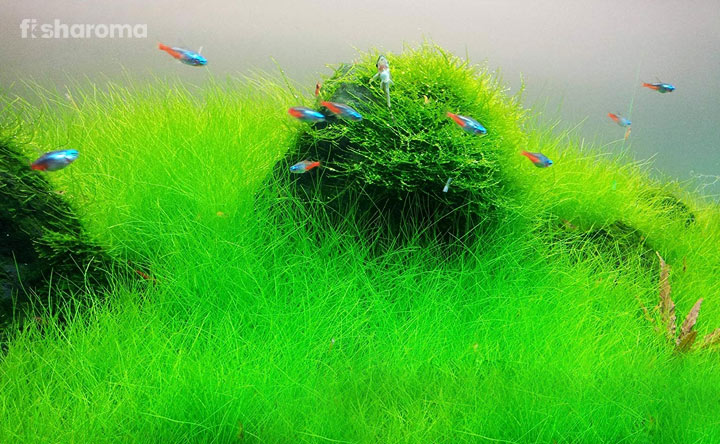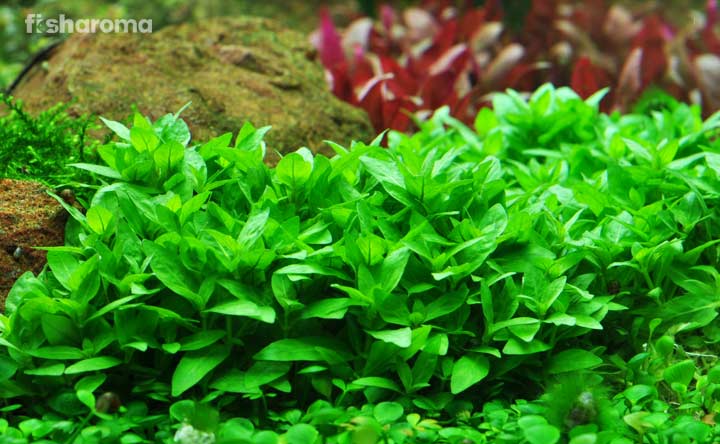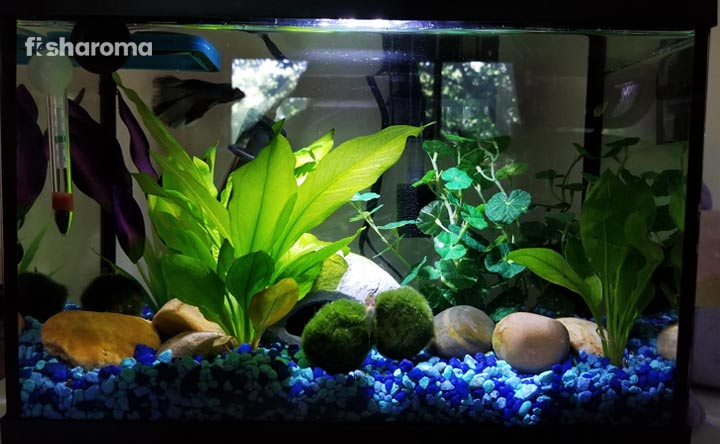Hornwort: Care Guide for This Magnificent Aquatic Plant
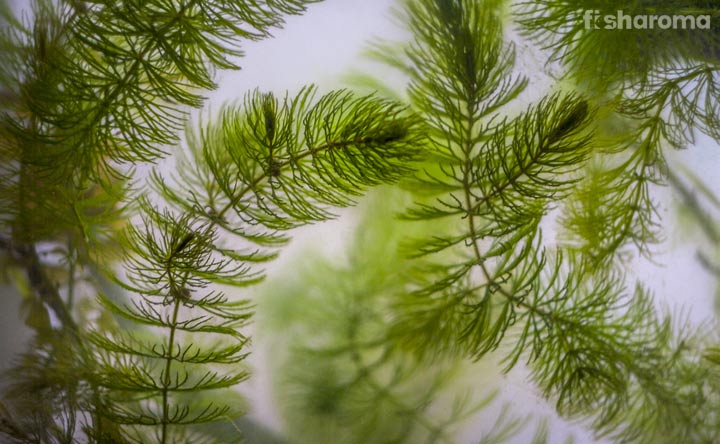
An aquarium without a plant can not only look dull but in more cases than none, may also become unhealthy for the living beings residing inside it. Now, we understand that for some of you, rearing a plant along with fish can seem daunting. But worry not; there are ample plants that you can host in your aquarium with much ease. One such plant among them is the Hornwort, which is what we are discussing here. From its appearance to its benefits, from its plantation method to its propagation process, we dig deep into everything that is related to Hornwort.
Key Specifications of Hornwort
You cannot raise a plant at home if you are not acquainted with its background. Therefore, we are providing the key specifications of a Hornwort that you need to know in order to keep it at your home.
| Scientific Name | Ceratophyllum demersum |
| Family | Ceratophyllaceae |
| Care Level | Easy |
| Size | Maximum 10 feet (120″/ 304 cm) |
| Growth Rate | Fast |
| Tank Size | 15-Gallons |
| Lighting | Moderate |
| Water Conditions | 59-86° F (15-30° C), 6.0-7.5 pH, 5-15 dGH |
Overview
Belonging to the Ceratophyllaceae family, Hornwort is an aquatic plant that stays completely submerged underwater, although it can occasionally be seen floating on the surface too. It is considered to be one of the easiest freshwater plants to grow, which makes it a favorite of aquarists, especially the beginners.
It is also extremely sturdy, thereby ensuring that it survives in extreme conditions in the wild. Easy to propagate and fast at growing, this aquatic plant is what you need if you don’t have much experience rearing a plant in your aquarium, because of how undemanding it is.
Scientifically, it is called Ceratophyllum demersum, which when broken down, translates into ‘horn’ (for ‘Keras’ in Greek), ‘leaf’ (for ‘phylon’ in Greek), and ‘underwater’ (for ‘demerses’ in Latin).
Origin & Habitat of Hornwort
Having its origin in North America, Hornwort has slowly and steadily spread its wing across all of the continents in the world, except Antarctica. This freshwater species is tolerant towards various water conditions, which makes it ideal for growing in a captive environment. These same reasons make it an invasive species in the wild too.
They are found in streams, marshes, ditches, lakes, ponds and sea and other damp and humid areas. They also grow as small weeds in back gardens and cultivated soil. Besides, they also have been seen to grow in the bark of huge trees in tropical rainforests, which have cool temperate regions.
Hornworts are cosmopolitan by nature and despite being a tropical plant, it can survive in cold water, which is why it has been seen growing in Norway too.
Appearance of Hornwort
Hornwort is a green-stem plant that has small hair or needle-like green leaves that grows on its tall, slender stems, thereby giving the plant the appearance of a furry tail. In fact, in its healthiest avatar, it is reminiscent of a Christmas tree that can even produce little flowers.
Since it doesn’t have any natural roots, its leaves anchor it down to the substrate. This is why they develop rhizoids. If not controlled, the anchored stems can grow all the way up to the water surface of the aquarium. In the wild, it can reach a height of a whopping 10 feet and a diameter of 2 mm.
The leaves of this plant are produced in whorls of six to twelve. Growing less than an inch, they tend to fork once or twice. The leaves are usually dark green in color, although they might display lighter shades of green in warmer weather.
As mentioned above, Hornwort is a flowering plant, wherein both male and female flowers can be seen in the same specimen, which makes it a monoecious plant. The flowering season is from July to September. The flowers are generally small, measuring 2 mm, and have around brown petals. Over time, a 4 mm ovoid fruit is also produced that has three spines arising out of it, of which one is apical and the other two are basal. During the autumn season, Hornworts develop buds, which soon sink to the bottom of the water to develop into new plants during the spring season.
Benefits of Hornwort
Hornworts are known for a number of beneficial aspects and can play a crucial part in the healthy growth of an aquarium. Some of its benefits are as follows.
- Hornwort helps in absorbing harmful chemicals that are emitted from fish waste and tap water, such as nitrates, ammonia, phosphates, and carbon-dioxide.
- It helps in oxygenating the water.
- Due to its water cleaning ability, it acts as a secondary filter to the mechanical filter in the aquarium.
- This aquatic genius also offers a cover and a buffet of biofilm, which is basically a community of micro-organisms.
- Its dense leaves serve as a great storage space for fish eggs.
- Small fish and fry (young fish) of adults use the thick leaves of this plant as their shelter.
- It adds an added texture to your aquarium.
- This plant is also known for prohibiting the growth of blue-green algae.
- It also serves as an excellent location for fish spawning.
- It protects shrimps from getting attacked by other large fish in a community tank.
Tank Requirements for Hornwort
Now, we have already stated how the versatility of Hornwort makes it liveable in almost any weather conditions, except the snows. But still, in order to create an ideal environment for it, we need to trace back the habitat of the place it originated from. Thus, the key factors that you need to keep in your mind while setting up an ideal tank for a Hornwort are as follows.
Tank Size
Due to its fast-growing nature and its relatively large size, it is recommended that it should be kept in a tank that can contain at least 15 gallons of water. A smaller tank will create a situation where the plant may outgrow the tank.
Nature of Lighting
Under artificial lighting, Hornworts grow at an even faster rate, almost an inch (2.5 cm) a day. Now, although it needs artificial lights to survive, try to moderate the intensity of the light inside the tank. Do not use too weak or too strong of a light. Besides, you also need to consider the kind of light that the other species in the tank prefer.
Make sure that your water is clear enough for the artificial light to penetrate through it. You can also opt for natural lighting, although it is not preferred by many since it is not under your control.
Filter
Hornwort lessens the load on the filter of your tank by acting as a natural filtration system in itself. It helps in curbing the excess presence of nitrates, ammonia, and nitrites in the tank water. The only thing that you have to keep in mind in this field is that never to plant it near a filter inlet since the risk of getting blocked by plant debris is extremely high in this situation.
Substrate
Hornwort works well in almost all kinds of substrate, however, fine-grained sands are recommended for it to stay anchored down to the bottom of the tank. Besides, mud-based substrate also works well for this plant.
Supplements
Hornworts consume a large portion of the nutrients in your tank. Therefore, it is suggested to add in fertilizers every week, so that the other fish and plants in your tank are not deprived of the same. However, do remember that too much fertilizer can deplete the nutrient in the soil.
Adding CO2 is not mandatory, although it will never cause harm to the environment inside, as long as you are doing it in proper quantity.
Water Type for Hornwort
After setting up the tank for your Hornwort, your next area of focus should go to the water that you will be adding inside. Let us guide you through the pointers that you need to keep in mind in this sector.
Temperature
The versatile nature of Hornwort allows it to survive in a wide range of water temperature, which is why you can keep the temperature inside the aquarium anything between 59-86° F (15-30° C). Try to install a thermometer inside the tank so that you can always keep a tab on the temperature.
pH Level
The pH level of the water inside a tank that hosts Hornwort should be 6.0-7.5. You should test the pH level of the tank water at least once a week.
Hardness
Make sure the hardness of the water always stays between 5-15 dGH.
Replacement Procedure
Replacing the entire water is never a good idea since it may suddenly change the ecological balance inside the tank. No matter how many precautions you may take, you more likely than none, won’t be able to replicate the temperature, pH level, mineral content and hardness of the water altogether. Moreover, you will also lose all the beneficial nutrients that the plants and other living species inside the tank need.
Therefore, we suggest you replace 25% of the tank’s water on a weekly basis. This way, the tank shall retain properties of the old water while also accepting new clear water. Make sure the new water that you are adding is of the same temperature, pH level, mineral content and hardness as of the existing water in the tank.
Do not clean the tank walls or the decors and substrate with soap-based chemical, since it may cause damage to both the plants and fish inside your tank.
Plantation Procedure of Hornwort
As we have stated above, there are two basic ways for you to plant your Hornwort – floating it on the water surface or planting it to the substrate of your aquarium. Whatever style you pick, do keep in mind the following aspects:
Floating on Surface
If you want to let your Hornwort to float on the water surface, you simply need to toss it into your tank. Surface-dwelling fish such as Hatchetfish prefer floating Hornworts. However, its fast growth nature can quickly cover up the entire surface of the water, thereby blocking any light from reaching underneath. So, you have to regularly trim it and control its growth.
This is not a favorable style for those fish and plants that prefer high lighting.
Planted on Substrate
We discussed earlier in our article that Hornworts don’t have roots of their own. They are anchored down to the substrate through its bottom leaves. Now, let us warn you beforehand that this procedure is a bit challenging than the previous one. It requires skill and also you need to be patient enough for the plant to develop its bottom leaves that will function as its anchors.
You can also shove the stems into the substrate and let it grow from there. Besides, a lot of people also use suction cups to keep their plants in place. Mid to lower-level fish such as loaches and tetras prefer Hornworts to be planted to the substrate.
Care & Maintenance of Hornwort
The only major concern in this sector is the fast-growing nature of Hornwort. This aquatic beauty spreads like a fire, especially under high-intense lighting. Therefore, you need to make sure that you trim it every now and then, especially if you have kept it floating on the water surface.
Other than this, you really don’t have to bother about it, as long as you are fulfilling all the aforementioned tank requirements and water conditions that this plant needs to survive.
Propagation of Hornwort
Propagation of Hornwort is rather easy and mostly happens without assistance from your end. The main stem of Hornwort grows multiple side shoots that get detached on their own as time passes. When these side shoots fall off to the bottom of the tank, they grow into a new plant in themselves. If they don’t fall off naturally, you can easily use a scissor to trim some parts down and use them to regenerate new plants. It usually takes a couple of weeks for the new plant to show up and develop.
Rarely, they grow from a seed, and even if they do, it is rarer in a captive environment. In the wild, the seeds sink to the bottom of the water and stay there during the entire winter season and rise up as new plants during the spring season.
Compatibility of Hornwort
The compatibility of Hornworts with other fish is not much of an issue, but there are definitely some fish with whom Hornworts are more compatible than others. Although their leaves are quite sturdy and not vulnerable to nipping, it is still suggested to avoid keeping it with fish those have a reputation for nipping.
Suitable Tankmates for Hornwort
Some of the ideal tankmates for Hornwort includes the following species:
- Mollies
- Guppies
- Snails
- Shrimps
- Loaches
- Scavenging Fish
Gouramis and Angelfish can also be kept with this plant but they are notorious for eating their leaves.
Difficulties in Rearing Hornwort
Apart from its fast-growth nature, the other major hurdle that you will face while rearing a Hornwort in your tank is its needle-shedding (leaf-shedding) behavior. Usually, it sheds more needles when it is first introduced to the tank, and once it gets used to the tank environment, it’s shedding slowly decreases. If it continues to shed for a prolonged period of time, this might be due to the high temperature of the water or lack of nutrients in it.
A lack of iron content or insufficient lighting can turn the leaves of Hornworts yellow. On the other end of the spectrum, it can turn red or brown if the intensity of the light is too high.
Interesting Facts about Hornwort
- The leaves of Hornwort can turn red if it is kept under intense bright light.
- It can grow in both warm and cold water.
- It is also known as Foxtail and Coontail.
Summary
So as we learn, Hornworts are easy to rear at home and do not require much effort from your end. Since it is hardy in nature, it is all the more appealing to beginners. Besides, its multi-purpose function helps both the fish and the tank environment. You can personalize as how you want to keep it in your tank – floated on the surface or planted on the substrate – depending on the style you prefer and the conditions of its tankmates. Apart from regular trimming, this plant is pretty undemanding and will not only be easy to grow but also will add to the aesthetics of your aquarium.
Similar Aquatic Plants
If you are looking for more aquatic plants, then you might want to consider the following:
- Water Wisteria: A tropical plant, it is extensively used by aquarist for its undemanding nature and can provide a carpet effect in your aquarium.
- Java Fern: Growing up to 3-5”, Java Ferns are made up of two major components – leaves and rhizomes. Its long tentacles give an ethereal presence to the aquarium.
- Dwarf Hairgrass: A multi-purpose aquatic plant, Dwarf Hairgrass is hardy and adaptable in nature and is a favorite of bottom-dwelling fish.

